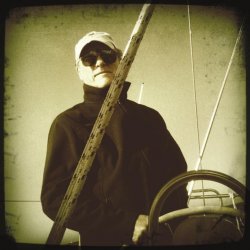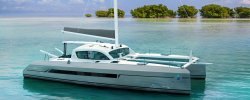
Student
John Paul Wallway
Vancouver, WA, USA
More User info
Skipper Small Sailboat Level I
Status: Sailor
Qualified days: 6
Posted 2017, Aug 26 18:29
The sail boat (in this situation, a power vessel) should avoid passing in front of the power boat, right? Shouldn't it turn hard to starboard?
Regarding explanation and image on "12- Rule 15: Crossing Situations"

Student
Michael Kazek
Benicia, CA, USA
More User info
Bareboat Charter Master Level V
Status: Big Time Sailor
Qualified days: 239
Posted 2018, Apr 16 01:19
Red over Green, vsl is sailing
White over Red, pilot ahead
Red over White, fishing at night
Green over White, trawling at night
Red over Red over Red, vsl is dead
I learned these way back in the early 80s...still sticks. r/ Mike

Student
Herendi Miklós
Gödöllő, Hungary
More User info
Crew Level 0
Status: Sailor
Qualified days: 0
Posted 2018, Nov 10 15:38
I know a number of places where ferries behave as if they could not alter their courses and they Stand On no matter what. I think they base this on the fact that they are like trams or trains, their designated courses are mapped on the chart and they can not deviate. Similarly, some passanger boats in general tend to do the same, claiming that because they have an official schedule, they can not afford altering their course or speed. Some examples are hydrofoil passanger boats in Italy, Jadrolinija boats in Croatia, ferries on the Balaton lake in Hungary.
Of course in practice you know this and you do what you must avoid them, but I would be interested how COLREG should really be interpreted in this case.

Student
Moray Sandison
Katy, TX, USA
More User info
Skipper (small keelboat) Level V
Status: Really Big Time Sailor
Qualified days: 592
Posted 2019, Jan 04 19:47
both boats are on port tack and the boat at the top of the picture is windward and therefore has to give way. The question is what action should it take. I put tack which would turn the boat away from the other boat. The answer stated that I should gybe which is a more dangerous maneuver than tacking and would involve turning towards the other boat. How is this the correct answer?

Student
Mark Howe
San Juan Capistrano, CA, USA
More User info
Crew Level 0
Status: Sailor
Qualified days: 0
Posted 2019, Jul 06 17:39
A vessel that has good reason to be avoided must let other boats know. For example a tug boat with barges may consider itself able to maneuver and change course to avoid a sailboat. Then be very upset if the sailboat thinks it must give way and does not hold course. At night exceptional vessels have colored light signals and daytime various shaped things that signify their ability to maneuver. The Christmas Tree Rule: if you see unusual colored lights at night or ornaments in daytime they are exceptional. Call them on the radio if there is any question of how to avoid them.

Student
Rosvita Rauch
Hill, NH, USA
More User info
Crew Level 0
Status: Sailor
Qualified days: 0
Posted 2020, Jan 05 13:35
Just in case anyone else, like me, doesn't immediately know what this means: "Astern propulsion (as applied to a ship) is a maneuver in which a ship's propelling mechanism is used to develop thrust in a retrograde direction. ... The equivalent concept for an airplane is reverse thrust. In a sailing ship astern propulsion can be achieved by the appropriate manipulation of the sails." https://en.m.wikipedia.org/wiki/Astern_propulsion

Student
George S.W. DuBose
Lakeland, FL, USA
More User info
Captain Level V
Status: Really Big Time Sailor
Qualified days: 368
Posted 2020, Jan 23 10:15
In some European canals, it is against the law and a fineable offense to sail or motor on the "wrong" side of the canal, even if there is no approaching or following traffic.

Student
Wesley Terpstra
San Mateo, CA, USA
More User info
Bareboat Charter Master Level III
Status: Big Time Sailor
Qualified days: 58
Posted 2020, Jun 13 04:17
I assume a boat at anchor qualifies as "not under command"? The reason I ask is because when I did the free course, I had a mistake whereby a boat "adrift" apparently did NOT qualify as "not under command". This surprised me, because when I hear "adrift", I think that either the boat got loose and has no crew or something is wrong (like rudder missing). So I don't understand why that boat would be give-way under the rules.

Student
Zoltan Lajko
Rockville, MD, USA
More User info
Captain Level V
Status: Really Big Time Sailor
Qualified days: 336
Posted 2020, Jun 20 15:03
To me it is easier to remember vessel on the right (starboard) has the right in a power crossing situation than “Is there any RED PORT LEFT?”

Student
Richard Attard
Toronto, ON, Canada
More User info
Crew Level 0
Status: Sailor
Qualified days: 4
Posted 2020, Sep 02 21:43
Do you have to be under power in a narrow channel or can you be under sail?